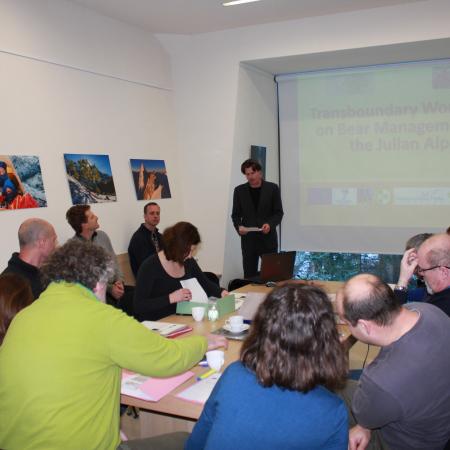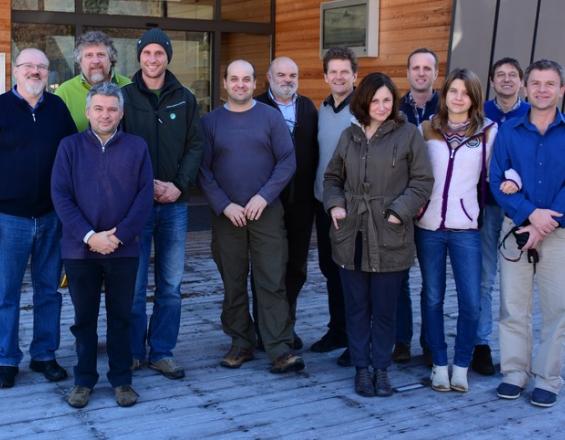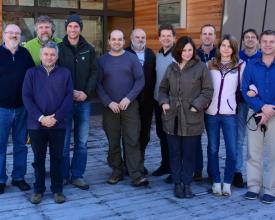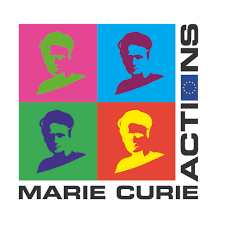
Promouvoir la coexistence transfrontalière des grands carnivores

Le projet a utilisé un processus décisionnel participatif pour développer un plan de gestion transfrontalier de l'ours pour un parc naturel en Italie (Prealpi Giulie) et un parc national adjacent en Slovénie (Triglav). Le projet a abouti à un accord commun pour l'allocation de ressources (argent et temps du personnel) afin de satisfaire tous les acteurs concernés par les ours bruns dans l'écorégion transfrontalière des Alpes Juliennes. Certaines des actions seront mises en œuvre dans le cadre de projets de parcs financés conjointement entre 2017 et 2026.
Contexte
Défis à relever
Emplacement
Traiter
Résumé du processus
Blocs de construction
Identifier et formuler le problème de la décision transfrontalière
Facteurs favorables
Leçon apprise
Identifier des objectifs communs de gestion transfrontalière
Facteurs favorables
Leçon apprise
Ressources
Options de gestion transfrontalière et facteurs externes
Facteurs favorables
Leçon apprise
Modélisation des conséquences transfrontalières et des compromis
Facteurs favorables
Leçon apprise
Détermination et mise en œuvre de l'allocation des ressources transfrontalières
Facteurs favorables
Leçon apprise
Impacts
Le processus conjoint et participatif a permis d'améliorer l'engagement des parties prenantes et de favoriser une communication plus fréquente entre les autorités des deux zones protégées. Les autorités de chaque parc sont parvenues à une compréhension commune des objectifs partagés, des actions, des facteurs externes échappant au moins en partie à leur contrôle, et de leurs liens en ce qui concerne la gestion des ours. Le projet a généré un outil d'analyse des décisions qui peut être développé pour informer un programme adaptatif de gestion des ours. Les autorités ont également appris ce qu'est la prise de décision structurée en tant que processus participatif d'analyse des décisions, qu'elles reconnaissent pouvoir appliquer à d'autres projets. Les actions convenues devraient permettre d'augmenter de plus de 50 % la capacité de charge des ours bruns à l'intérieur et à l'extérieur de la zone TB, de maintenir une agriculture durable en conservant les petites exploitations et de minimiser les conflits entre les groupes de parties prenantes. Au cours du projet, les autorités du parc slovène ont réussi à faire pression pour un changement de législation qui a réduit les obstacles administratifs pour retirer les ours de la nature à la suite de perturbations dans des propriétés privées. La réduction de cette charge administrative améliorera la perception par le public de la gestion des zones protégées de l'ours brun dans la région de la tuberculose.
Bénéficiaires
Objectifs de développement durable
Histoire








